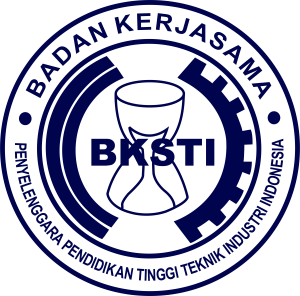Simulation of trends in the use of e-payment using agent based models
DOI:
https://doi.org/10.12928/ijio.v1i1.1276Keywords:
Agent Based, Epayment, CashlessAbstract
Bank Indonesia (BI) as the central bank in Indonesia has launched a movement to use non-cash instruments in conducting transactions on economic activities. The majority of Indonesian people are increasingly ready to trade without cash or cashless society. The country's economic policy factors, the availability of various non-cash payments, and online sales and purchases, encourage the tendency to use non-cash transactions (e-payment). One way to find out these trends is to use a model. Models can help understand and explain real phenomena more easily and efficiently than directly observing. One model that can be used is Agent Based Modeling and Simulation (ABMS). By using ABMS, the development of models with complex behaviors, dependencies, and interactions can be developed more easily. ABMS is able to describe processes, phenomena, and situations. In this study, the factors that influence the tendency to use e-payment are obtained from various references. From these factors, then created a scenario as a sub-purpose of this model. In simulations using ABMS, detailed descriptions explained based on ODD Protocol elements can be more easily understood and complete. ODD systematically evaluates a model. The advantage is that ODD can improve the accuracy of model formulas and make the theoretical basis more visible.
References
Dehbini, N., Birjandi, M., & Birjandi, H. (2015). Factors Influencing the Adoption of Electronic Payment Cards in Urban Micro-Payments. Research Journal of Finance and Accounting,16(1), 2015.
Fahmi, S.C. (2016). Analysis of Factors Affecting Community Preferences Using Cash Transactions (Case Study of 5 College Students in Yogyakarta). Scientific Journal of Economic Study Program FEB UMY.
Fajri, M. (2018). Simulation with Agent-Based Modelling, http://psti.ft.ugm.ac.id/2018/10/09/simulation-with-agent-based-modelling/. Accessed 16 Oktober 2019.
Gilbert, N. (2007). Agent-Based Models. University of Surrey: The Centre for Research in Social Simulation, epubs.surrey.ac.uk/cress/13.
Grimm, V., Berger, U., DeAngelis, D.L., Polhill, J.G., Giske, J., & Railsback, S.F. (2010). The ODD Protocol, A Review and First Update. Ecological Modelling 221 (2010) 2760-2768.
Junadi & Sfenrianto. (2015). A Model of Factors Influencing Consumer’s Intention to Use E-Payment System in Indonesia. Procedia Computer Science 59 (2015) 214-220.
Macal, C.M. & North, M.J. (2008). Agent-Based Modeling and Simulation: ABMS Example. Proceedings of the 2008 Winter Simulation Conference.
Nisa, D.D. Ariyani, T.S., & Oktaviani, K. (2013). Analysis of Factors Affecting Customers Using Mandiri Internet Banking Services. Journal of Management Vol 13 No 1 November 2013.
Rogers, E. (1995). Diffusions of Innovations, http://web.stanford.edu/class/symbsys205/Diffusion%20of%20Innovations.htm. Accessed 30 Mei 2017.
Sitohang, E.T. (2016). Determinants That Influence Use of Internet Banking Services. Mediterranean Journal of Social Sciences, 3(5), 33-41.
Wilensky, U. & Rand, W. (2015). An Introduction to Agent-Based Modeling. Cambridge, Massachusetts: The MIT Press.
Yudhistira P., A. (2014). Analysis of Factors Influencing Preference and Accessibility to the Use of Electronic Payment Cards. Scientific Journal of the Department of Economics Faculty of Economics and Business, Universitas Brawijaya Malang.
Downloads
Published
How to Cite
Issue
Section
License
License and Copyright Agreement
In submitting the manuscript to the journal, the authors certify that:
- They are authorized by their co-authors to enter into these arrangements.
- The work described has not been formally published before, except in the form of an abstract or as part of a published lecture, review, thesis, or overlay journal. Please also carefully read the International Journal of Industrial Optimization (IJIO) Author Guidelines at http://journal2.uad.ac.id/index.php/ijio/about/submissions#onlineSubmissions
- That it is not under consideration for publication elsewhere,
- That its publication has been approved by all the author(s) and by the responsible authorities tacitly or explicitly of the institutes where the work has been carried out.
- They secure the right to reproduce any material that has already been published or copyrighted elsewhere.
- They agree to the following license and copyright agreement.
Copyright
Authors who publish with the International Journal of Industrial Optimization (IJIO) agree to the following terms:
- Authors retain copyright and grant the journal right of first publication with the work simultaneously licensed under a Creative Commons Attribution License (CC BY-SA 4.0) that allows others to share the work with an acknowledgment of the work's authorship and initial publication in this journal.
- Authors are able to enter into separate, additional contractual arrangements for the non-exclusive distribution of the journal's published version of the work (e.g., post it to an institutional repository or publish it in a book), with an acknowledgment of its initial publication in this journal.
- Authors are permitted and encouraged to post their work online (e.g., in institutional repositories or on their website) prior to and during the submission process, as it can lead to productive exchanges, as well as earlier and greater citation of published work.

1.png)

